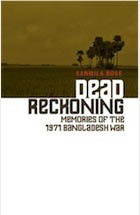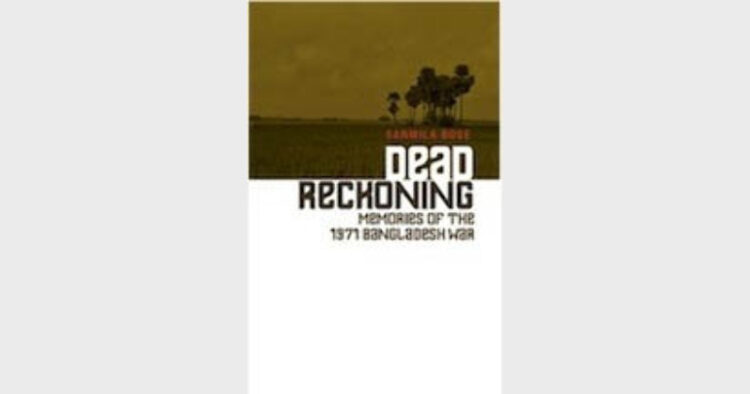A brilliant study of Bangladesh War ?
By Manju Gupta?
 Dead Reckoning: Memories of the 1971 Bangladesh War, Sarmila Bose, Hachette India, Pp 250, Rs 495 ?
Dead Reckoning: Memories of the 1971 Bangladesh War, Sarmila Bose, Hachette India, Pp 250, Rs 495 ?
This is a study which brings together the experiences of all sides in the Bangladesh conflict at the ground level and combines them with other documentary or audio-visual material to create a chronicle of the 1971 conflict and present a non-partisan analysis. It contains case studies from different districts and different moments of timeline of the conflict with different groups of ‘combatants’, ‘perpetrators’ or ‘victims’. The timeline for this study ranges between January 1971, just after the historic elections of December 1970 and ends in March 1972, three months after the independence of Bangladesh.
Since the book is full of real life studies, it is not possible to describe them here but suffice it to present chronologically presented contents of each chapter. The book explores the contours of the conflict through a detailed study of particular incidents. Chapter 1 highlights some of the overlooked or misrepresented facets of the 1970 general elections, the subsequent failed negotiations and the nature of the Bengali nationalist agitation that erupted in East Pakistan. Chapter 2 focuses on the period one to 25 March, when East Pakistan appeared to be ruled by a parallel government of Sheikh Mujibur Rehman’s decrees. The third chapter titled ‘Military Action’ investigates the start of military action to suppress the Bengali rebellion, examining in detail the attack by the Pakistan army on Dhaka University on 25-26 March 1971. Chapter 4 chronicles and analyses through 10 different case studies the bitter and bloody civil war that engulfed the province in the following weeks. The fifth and sixth chapters focus on single major incidents during the war to examine widely made allegations of civilian massacres in the persecution of Hindus, followers of the majority Indian religion. Chapter sever depicts selected cases of the ‘underground’ fighters for Bangladesh’s liberation and her response to some of the army units in a long war of attrition. The eighth chapter assesses the bitter bloodletting in the last days of the war and the first months of Bangladesh’s independence, including the widely reported killing of intellectuals in Dhaka in the dying days of the war. Chapter 9 brings together many different strands of the story to examine the deployment of words and numbers in the narratives of 1971, including the question of whether there was “genocide” of “three million Bengalis” during 1971 or not.
A longstanding theme of the 1971 conflict, confirmed by the study in unexpected ways is the state of denial in Pakistan: the refusal to confront what really happened in East Pakistan. However, the study reveals a greater state of denial in Bangladesh and to some extent in India with regard to “the true nature of the conflict,” according the author.
It is difficult to say whether the author’s conclusions of events of 1971 are correct or the official views, what makes one read the book are the case studies which at times make one’s hair stand on edge.
(Hachette Book Publishing India Pvt Ltd, 612/614 (6th Floor), Time Tower, M.G. Road, Sector 28, Gurgaon-122 001.)














Comments